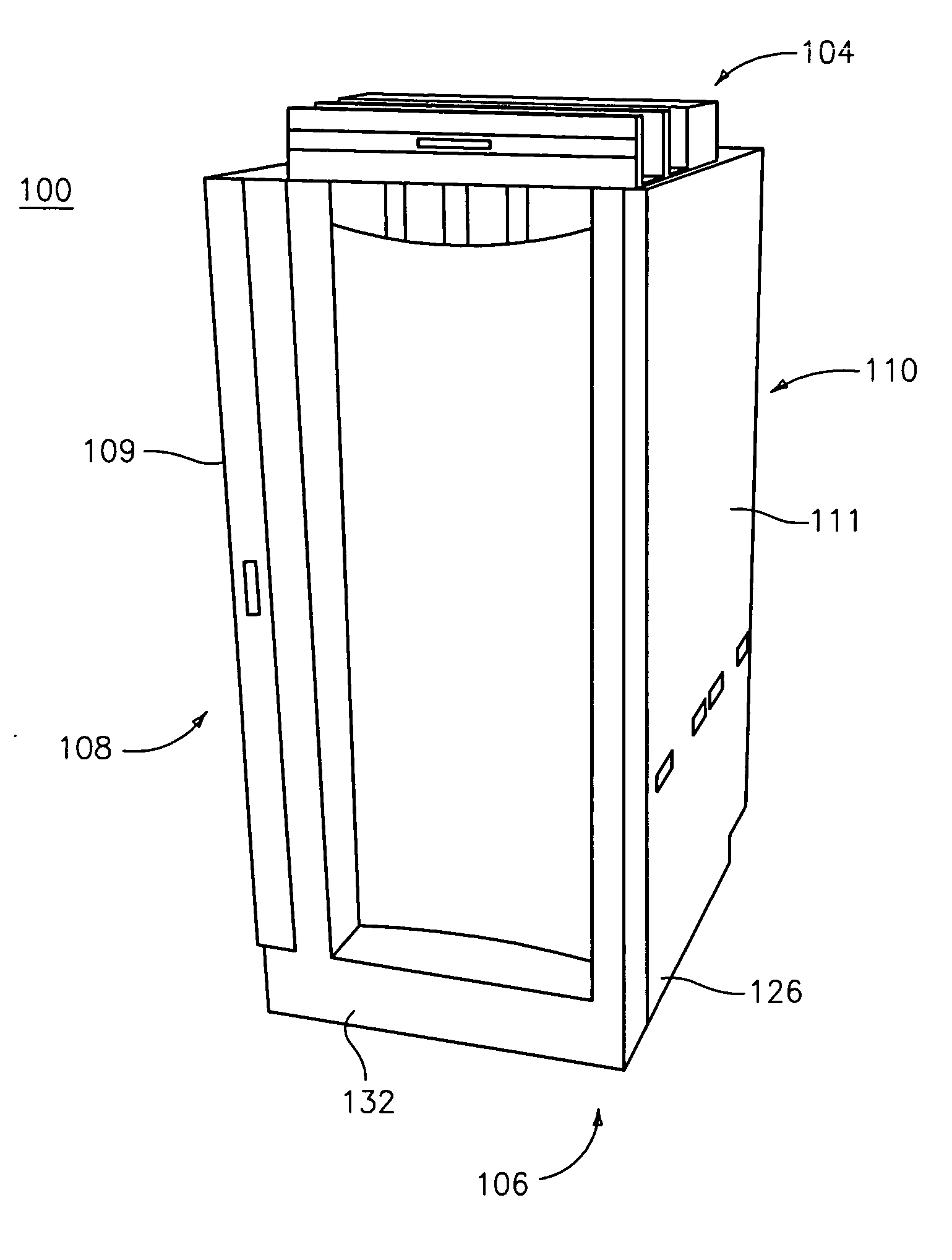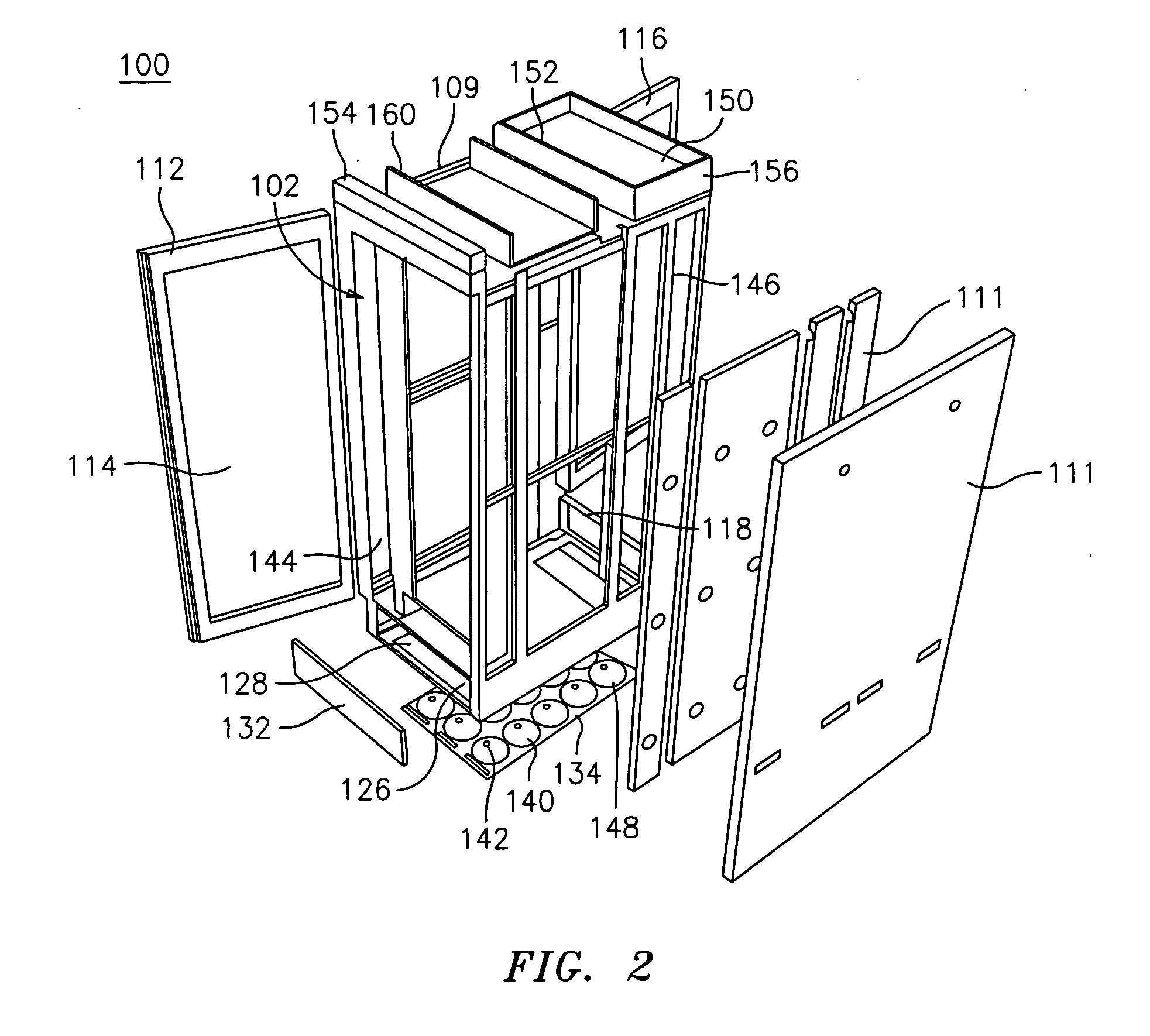Cabinet for electronic equipment
a technology for electronic equipment and cabinets, which is applied in the direction of electric apparatus casings/cabinets/drawers, lighting and heating apparatus, instruments, etc., can solve the problems of equipment error, increase in the internal temperature of the cabinet, and increase the heat load of the cabinet, so as to achieve stable and reliable operation environment
- Summary
- Abstract
- Description
- Claims
- Application Information
AI Technical Summary
Benefits of technology
Problems solved by technology
Method used
Image
Examples
Embodiment Construction
)
[0044]The exemplary embodiments of the cabinet system and methods of use disclosed are discussed in terms of housing and maintaining electronic equipment and more particularly, in terms of a cabinet system having a gas flow distribution configuration that regulates temperature for monitoring conditions of the system. The system includes cooling of heat generating electronic components. It is envisioned that the present disclosure may be employed with a range of applications including various types of electronic equipment. The electronic equipment may include computers, data servers, storage systems, communication systems, audio / video components, telecommunication equipment, etc. It is envisioned that the present disclosure may be employed with blade server technology. It is further envisioned that the present disclosure may be used as a dynamic cooling system to accommodate additional equipment, modified equipment, and / or changing heat loads. The temperature regulation and associat...
PUM
 Login to View More
Login to View More Abstract
Description
Claims
Application Information
 Login to View More
Login to View More - R&D
- Intellectual Property
- Life Sciences
- Materials
- Tech Scout
- Unparalleled Data Quality
- Higher Quality Content
- 60% Fewer Hallucinations
Browse by: Latest US Patents, China's latest patents, Technical Efficacy Thesaurus, Application Domain, Technology Topic, Popular Technical Reports.
© 2025 PatSnap. All rights reserved.Legal|Privacy policy|Modern Slavery Act Transparency Statement|Sitemap|About US| Contact US: help@patsnap.com



